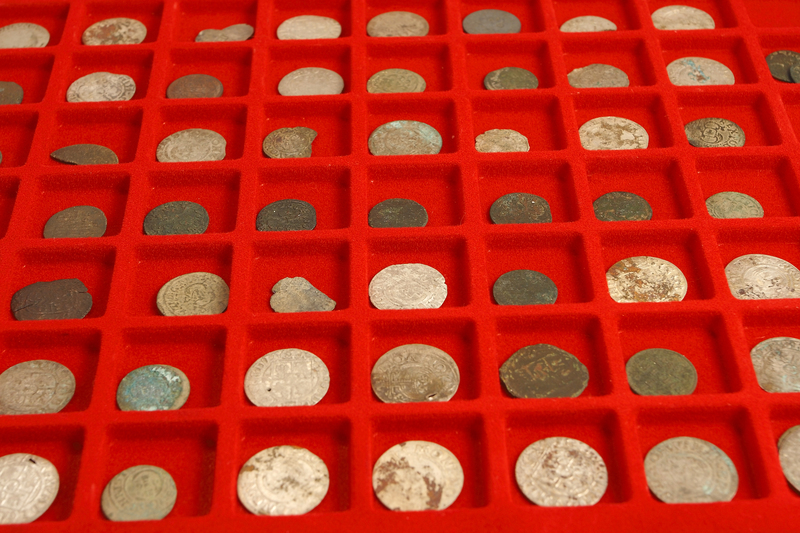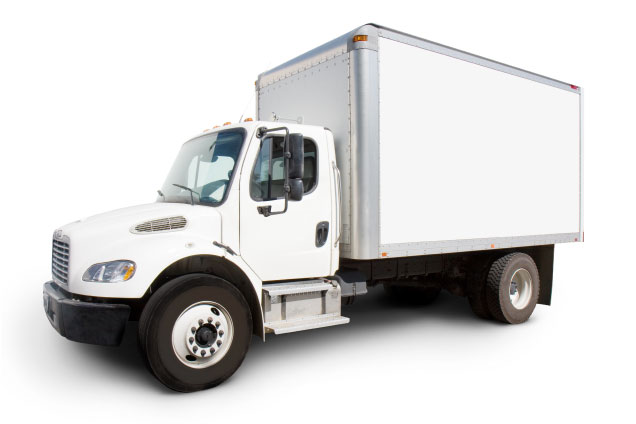Achieving Optimal Storage for Your Freezer During Downtime
Posted on 11/06/2025
Achieving Optimal Storage for Your Freezer During Downtime
Proper freezer management is essential for both households and businesses. Yet, one often overlooked aspect is how to achieve optimal storage for your freezer during downtime. Whether your freezer is unused during certain seasons, a business freezer is on pause, or you're simply between shopping trips, the way you manage and store items during these periods can have significant impacts. This comprehensive guide explores the strategies, methods, and best-practices to maximize the utility, reliability, and hygiene of your freezer throughout periods of inactivity.

Understanding Freezer Downtime
Freezer downtime refers to those periods when your freezer is not in active use or when its contents are minimal. It can mean:
- Seasonal pauses, such as after a busy holiday period or when produce is out of season
- Maintenance periods, including defrosting or cleaning
- Between restocking phases, such as just before or after a large shopping trip
- Temporary business closure or reduced operational times
How you manage your freezer during these times can make a significant difference to its longevity, your food's safety, and your overall budget.
Why Proper Freezer Storage During Downtime Matters
- Food Safety: Improper storage may lead to freezer burn, spoilage, or contamination.
- Energy Efficiency: An optimally stored freezer uses less energy, controls temperatures better, and contributes to sustainability.
- Appliance Longevity: Good practices prevent unnecessary wear, ice build-up, and workload spikes.
- Organization: Efficient storage during downtime promotes smarter restocking when use resumes.
Key Challenges During Freezer Downtime
- Changes in internal temperature that can affect food quality
- Increased risk of odors, mold, and frost if improperly sealed or cleaned
- Potential power issues or malfunctions if ignored for extended periods
Step-by-Step Guide to Achieving Optimal Storage for Your Freezer During Downtime
1. Take Inventory and Prioritize
Start by taking full inventory of your freezer contents. Remove everything and group items by type and freshness:
- Perishables that need quick consumption
- Items safe to remain frozen for extended periods
- Foods past their usability (these should be discarded)
This step helps you avoid unnecessary clutter and spot items needing urgent attention. Make it a habit to label foods with dates and descriptions for future reference.
2. Clean and Sanitize the Freezer
Before reorganizing, thoroughly clean your freezer. If the downtime is extended, consider defrosting to remove ice build-up. Here's an effective process:
- Unplug the freezer (if defrosting), or ensure it's powered down safely.
- Remove all food and store in a cooler or temporary freezer if needed.
- Wipe down interior surfaces with a solution of warm water and mild detergent.
- Sanitize with a mixture of vinegar and water, and thoroughly dry all surfaces.
- Check gaskets and seals for signs of wear or grime.
Routine cleaning not only ensures optimal freezer storage conditions but also prevents unpleasant odors and mold during periods of non-use.
3. Proper Organization and Storage Methods
Once your freezer is clean and dry, it's time to organize what remains for storage. Focus on maximizing space, protecting food quality, and making future access easier.
Follow these best practices:- Use Airtight Containers: Prevents freezer burn and cross-contamination.
- Vacuum Seal: Vacuum-sealed bags significantly extend shelf life during freezer downtime.
- Freeze Flat: Store soups and similar items flat to save space and aid stacking.
- Label Clearly: Date and describe each item for easy tracking.
- First-In, First-Out System: Store older items at the front to ensure they're used first when downtime ends.
For extended downtime, group items by type (meat, produce, baked goods) using bins or baskets to prevent mix-ups and to streamline the next restocking phase.
4. Maintaining the Right Temperature
Optimal storage relies on the freezer maintaining a steady temperature of 0?F (-18?C) or lower, even during periods of limited use. If your freezer is almost empty, consider:
- Filling Empty Spaces with Containers of Water: This helps maintain thermal mass, stabilizing internal temperatures and reducing energy use.
- Avoiding Overcrowding Near the Air Vents: Good airflow ensures uniform cooling and prevents localized thawing or frost formation.
- Monitoring with a Freezer Thermometer: Place one inside to check for fluctuations during downtime.
If your freezer will not be used for months, follow manufacturer guidance on whether to disconnect and prop open the door to prevent mold, or to keep it powered (and filled with non-perishables) to avoid mechanical risks.
5. Minimize Frost and Ice Buildup
Frost buildup can reduce energy efficiency, decrease storage space, and damage stored food. To maintain ideal storage conditions in your freezer during downtime, ensure:
- Seals and gaskets are in good condition
- Doors are not opened frequently or left ajar
- Frozen foods are wrapped tightly with minimal air exposure
If frost appears, defrost and clean before further storage. For chest freezers, periodically rotate contents to prevent "freezing in" or loss in the recesses.
6. Protecting Against Odors and Cross-Contamination
When fewer items remain or during pauses, odor control becomes crucial. Baking soda boxes are a classic solution to absorb off smells, and always ensure:
- All food is sealed tightly
- Raw and cooked foods are separated
- Frequently check for spills or leaks, especially with frozen meats
Odor-free, contaminant-free storage is part of achieving optimal freezer storage during periods of inactivity.
Advanced Strategies for Optimal Freezer Storage During Downtime
Utilizing Technology to Monitor Your Freezer
Smart sensors are increasingly popular for real-time monitoring. These devices can:
- Alert you of power failures or temperature spikes
- Log temperature data over downtime periods
- Integrate with home monitoring systems for full peace of mind
Additionally, consider setting up a backup power source (like a battery backup or generator) if your area is prone to outages, especially if the freezer stores high-value or sensitive items.
Optimizing for Commercial and Business Settings
Restaurants, supermarkets, and food service providers face unique challenges during freezer downtime, such as holiday closures or renovations. Here's how to optimize freezer storage during business downtime:
- Schedule Deep Cleaning and Defrosting: Take advantage of the lull for thorough sanitation and maintenance.
- Inventory Reconciliation: Update lists to streamline ordering and restocking post-downtime.
- Redistribute Stock: Move perishables to other locations or create special offers to reduce waste before closing periods.
- Implement Rotation Plans: Use downtime to rotate older inventory forward, minimizing losses.
Environmentally Friendly Storage Practices
The way you manage your freezer can also impact the environment. For eco-friendly optimal freezer storage during inactive periods:
- Don't run nearly-empty freezers--fill with water containers to stabilize, or power down safely if not needed
- Use reusable containers to cut down on single-use plastics
- Recycle or compost spoiled foods instead of letting them accumulate
- Consider upgrading to energy-efficient freezer models if downtime is frequent
What To Avoid During Freezer Downtime
Even seasoned home cooks or business owners make mistakes that sabotage freezer efficiency during downtimes. Watch out for these common pitfalls:
- Leaving unwrapped or poorly sealed food, which accelerates spoilage
- Ignoring your freezer for extended periods -- out of sight can mean out of mind, leading to power failures or mechanical issues going unnoticed
- Allowing moisture to linger after cleaning, which encourages mold or ice
- Using the downtime as a dumping space for odds and ends -- always maintain organization and purpose
- Forgetting to periodically check and refresh the contents, especially if downtime lasts more than a month
Best Foods & Items to Store During Downtime
Certain foods and items fare better during prolonged periods of low-use. If you must keep your freezer running, fill it mostly with the following:
- Frozen fruits & vegetables: Typically last 8-12 months
- Uncooked meats: Vacuum-sealed beef, pork, and poultry remain fresh longest
- Breads and baked goods: Bagels, loaves, muffins, and more thaw well after storage
- Prepared meals: Soups, stews, and casseroles are resilient in the cold
- Water containers: For non-food thermal mass, aiding temperature stability
Steer clear of high-moisture fruits, dairy items that don't freeze well (like soft cheeses), and anything past its expiration date.

Preparing Your Freezer for Downtime: A Quick Checklist
- Inventory contents, discard as needed, and label what remains
- Thoroughly clean and sanitize interior surfaces
- Organize with airtight containers and bins by food group
- Adjust temperature and use water bottles as fillers if nearly empty
- Monitor with a thermometer or smart device
- Check seals and gaskets for a tight closure
- Plan for periodic checks during prolonged downtime
Conclusion: Making the Most of Freezer Downtime
Whether you're a home chef, a busy parent, or a business owner, achieving optimal storage for your freezer during downtime is crucial. Through regular cleaning, thoughtful organization, temperature control, and the use of proper containers, your freezer will stay fresh, efficient, and ready to use at a moment's notice. Don't let unused time go to waste -- use downtime as an opportunity to prepare, maintain, and improve your freezer storage practices for the ultimate in food preservation and appliance care.
Stay proactive, and your freezer will be an asset rather than an afterthought, ensuring food safety, waste reduction, and cost savings all year round.





